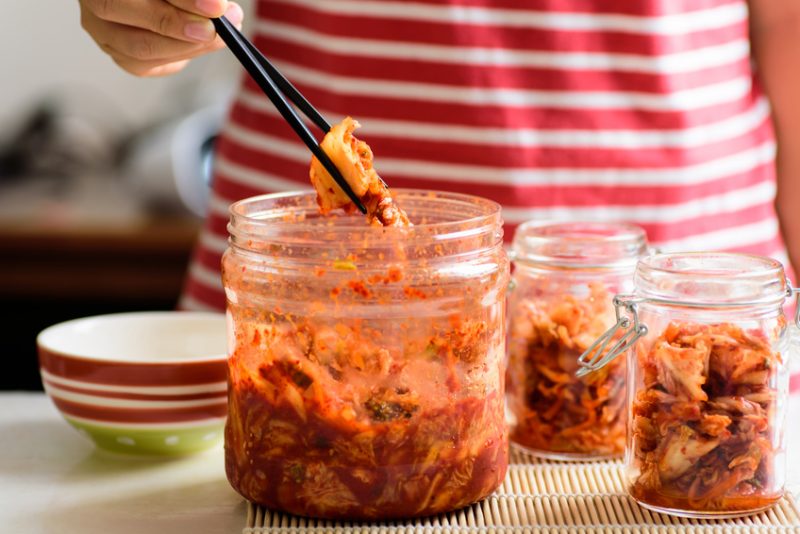
Traditional Kimchi from Korea
The kimchi is one of the most representative dishes of Korea: it is vegetables that are fermented in soy sauce and spices of various kinds, it’s quite spicy and it is usually served as an accompaniment to all the typical dishes. Specifically, the kimchi is always part of the banchan, the series of appetizers that precede and accompany the main meals and that consists of a number of dishes ranging from 4 to 12, to be divided among all the guests.
The most famous kimchi is the one based on cabbage but in reality, it can be prepared with different vegetables; there would be a typical recipe but like all traditional recipes it varies depending on the region in which it is prepared, who prepares it and therefore also on the ingredients. In general, the kimchi has a recognizable taste but within this flavor, you can identify others.
Let’s start from the basics: to make the kimchi with cabbage, the most famous, you should only and exclusively use ingredients available in Korea (after all, to prepare a perfect pasta carbonara, the best ingredients are those found in Italy and even better in Rome and in the province) but in the absence of the original ingredients, you can use ingredients that you can easily find in your place.
Preparing kimchi is not easy and it is not fast, but certainly tasting your senses will be all satisfied; most of the ingredients to prepare kimchi are found in Asian supermarkets and in many cases even in larger supermarkets.
Ingredients for a bowl
- 2 cabbages
- 65 grams of salt
- 120 ml of water
- 450 grams of horseradish
- 3 shallots
For seasoning
- 1 tablespoon of glutinous rice powder
- 100 grams of powdered chili
- 3 tablespoons saeujeot (shrimp sauce) or anchovy paste
- 2 tablespoons of fish sauce
- 3 tablespoons of finely chopped garlic
- 1 tablespoon of finely chopped fresh ginger
- 100 ml of water or vegetable stock (better if the Korean dashima)
Method
- Cut the cabbage longitudinally into quarters, then cut again in half.
- Place the cabbage in a large bowl, cover with the water and add the salt. Make sure that the cabbage is submerged in salted water and leave it in immersion for one night.
- The next day, remove the cabbage from the brine, rinse it 3 times in order to remove the excess salt and place it in a colander in order to let the excess water, fall.
- Mix all the seasoning ingredients and set aside.
- Cut the horseradish and the shallots lengthwise and place them in a large bowl.
- Add the seasoning and mix well. Leave aside for 1 hour and, if necessary, add more salt or fish sauce after tasting.
- Cut the cabbage into pieces and mix well with all the seasoning. Rinse the bowl containing the dressing with water and add the liquid to the cabbage.
- Allow the cabbage to flavor for 2 days at room temperature after placing it in a sterilized glass jar then transfer it in the refrigerator: the kimchi should be left to stand for 2 weeks before being consumed and can be eaten for weeks once it is ready.
Preparation time: 4 days + rest







